Understanding is power in decision-making. Despite increasing attention towards the craft beer label as a buzzword, there is an honest cause beyond it. The understanding of this cause is an exercise beyond semantics and would fundamentally impact Malaysian beer drinkers.
A Note Before Reading:
This article is divided into 4 Parts.
• ‘Part 1: The Craft Beer Cause’ is discussed in Three Aspects.
• ‘Part 2: How The Craft Beer Cause Affects Our Culture’ illustrates craft beer in the cultural context in Malaysia.
• Part 3 discusses the challenges for the craft beer cause in Malaysia.
• Part 4 concludes on how the craft beer cause may affect Malaysians.
PART 1: THE CRAFT BEER CAUSE
Understanding is power in decision-making.
Despite increasing attention towards the craft beer label as a buzzword, there is an honest cause beyond it. The understanding of this cause is an exercise beyond semantics and would fundamentally impact Malaysian beer drinkers.
The natural starting point is the binary dichotomy of craft beer versus ‘big beer’.
To illustrate this on its surface, ‘big beer’ includes brands like Tiger, Carlsberg, Guinness, Anchor, Connors, Heineken, Chang, Asahi, Budweiser and so on.
On the other hand, craft beer breweries include Hitachino Nest Beer, Rogue, Brewdog, Tempest Brewing Co., Mikkeller, Amager, 2 Brothers, Hawkers Beer, Pasteur Street Brewing Co., and so on.
What is the craft beer cause? We will explore this from three aspects and examine how it is better than ‘big beer’.
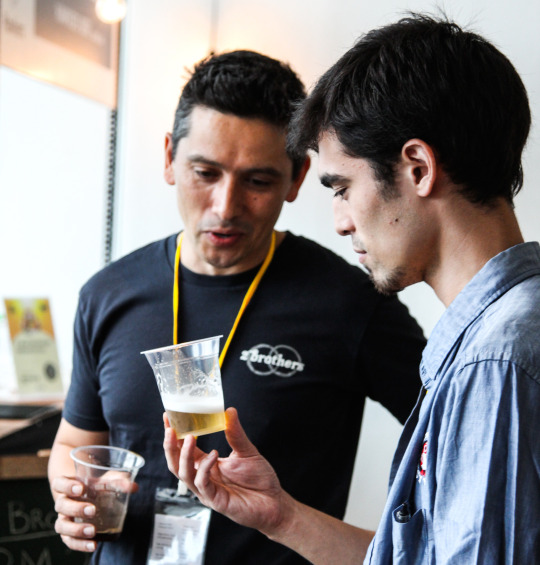
THE FIRST ASPECT: THE PRIORITISED DIRECTION
BEER TAKEAWAY:
The foundation of the craft beer cause is the independence of craft brewers to make the quality and diversity of beers a priority.
The overarching drive for the craft beer cause is its independence, which translates into the direction which the brewer prioritises.
A study by Bloomberg revealed that 6 out of 10 drinkers considered the brewer’s independence as an important factor when picking craft beer.
This doesn’t come as a surprise, as the independence of craft brewers gives them flexibility to brew beer with character, in line with their passion for better beers. Ultimately, their independent drive allows them to make the quality and diversity of beers a priority.
Whilst quality of beers are not wholly neglected by ‘big beer’, ‘big brewers’ are tied down by corporate bindings which focuses on their capitalist interest above all others. For ‘big beer’ companies, profits are priority even if it means pushing down the quality of their beers to the minimum threshold required to satisfy expectations of the masses.
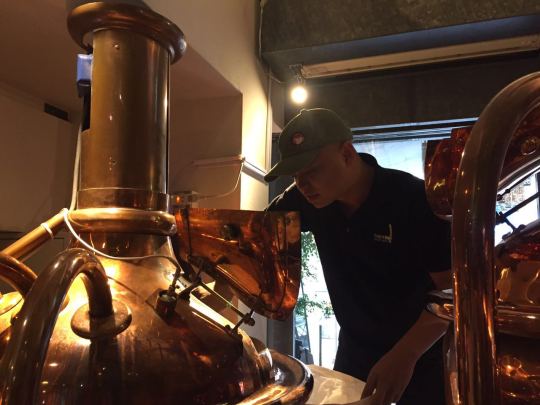
THE SECOND ASPECT: BREWING METHODS TO BREW BETTER BEERS
BEER TAKEAWAY:
The craft beer cause is built upon brewing methods to brew better beer. This points to the use of brewing equipment to produce variety in smaller quantities, coupled with the choice of ingredients for flavour innovation.
In terms of brewing equipment, the difference between craft brewers and ‘big brewers’ may not necessarily point to the type of equipment, but rather the use of them.
For ‘big beer’, brewing beer with mass appeal is a more cost effective use of their brewing equipment. This conservativeness points to their motivation to achieve productivity and economies of scale, by churning out the same type of beer in mass quantities.
Owing to their independence and respect for beer, craft brewers on the other hand are more incentivised to practice proper brewing techniques to brew beer with character in smaller quantities despite being more expensive and laborious.
Furthermore, the choice of ingredients used by ‘big brewers’ may, to some extent, differ to that of ‘craft brewers’.
‘Big brewers’ may use cheaper adjuncts or substitute ingredients with the aim of reducing production costs and producing increased yield which may result in bland-tasting beer.
Craft brewers, however, are unafraid to experiment with different ingredients for flavour innovation, while honouring proper brewing methods and without compromising on the taste and experience aspects of beer.
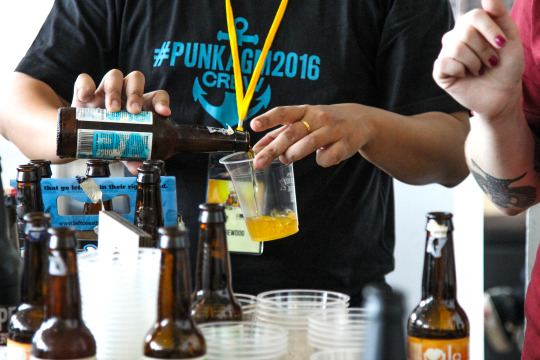
THE THIRD ASPECT: WHAT DRIVES DEMAND
BEER TAKEAWAY:
The craft beer cause is centred around the quality of the taste experience to the extent that quality on its own is capable of driving demand.
Imagine a world where we are not influenced by advertising and where we are unaware of the difference between craft beer and ‘big beer’. Upon being given a taste sample of a Budweiser and a craft beer lager (eg. Kung Foo Lager by 2 Brothers Brewery), it is highly likely that the craft lager would be preferred purely based on the quality of the taste experience.
When it comes to craft beer, the quality of the beer on its own is capable of driving demand. ‘Big beer’, however, has to compensate on their lack of quality beers through mass-advertising and marketing (eg: through commercials like Budweiser’s Superbowl Commercial, or even through events like Heineken’s Thirst or GAB’s Oktoberfest).
As BrewDog said in a press release,
“Big beer advertising is bulls**t. If you have to spend millions of pounds on ad campaigns to get people to drink your beer, the brewing is probably being neglected.”
PART 2: HOW THE CRAFT BEER CAUSE AFFECTS OUR CULTURE
BEER TAKEAWAY:
With the rise of the craft beer revolution in most parts of the world, we Malaysians have now come full circle where craft beer by independent microbreweries are made available to be enjoyed as better beers.
An optimistic observation points to the growth of the craft beer culture towards a direction similar to that of the coffee culture and, in particular, the ‘third wave coffee culture’.
References to the ‘third wave coffee culture’ today are widespread and generally encapsulate the movement where people appreciate coffee as an artisan or craft beverage and are aware of its origins, and roasting and brewing process.
In many ways, from a historical standpoint, the current ‘third wave coffee culture’ is a product of how coffee has come full circle…
• since the 1500s when coffeehouses spawned in the Middle-east and eventually in Europe,
• followed by the Industrial Revolution giving rise to the mass production of tin cans and instant coffee that makes it convenient to attain the caffeine buzz,
• up to the current decade where cafes and artisanal coffee are enjoyed as a craft beverage.
Beer has paved a similar path…
• Where small brewpubs practicing traditional brewing methods were widespread around the 1700s,
• before the Prohibition period and the Industrial Revolution allowed and facilitated the survival and rise of big, commercial beer companies,
• followed by the rise of the craft beer revolution worldwide where better beer is enjoyed and people are appreciating its origins, brewing process, and variety.
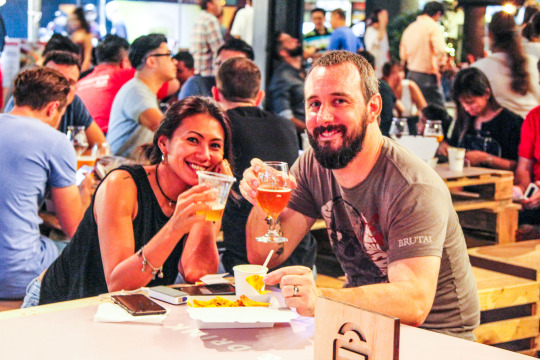
PART 3: THE CHALLENGE FOR THE CRAFT BEER CAUSE IN MALAYSIA
Despite the better cause of craft beer, pragmatic barriers of accessibility and price stand in the way of creating a level-playing field with ‘big beer’ in Malaysia.
From neighbourhood bars and restaurants to supermarkets and convenient stores, ‘big beer’ is everywhere and, more importantly, Malaysians are aware of it. Encouraging as it may be that craft beer today is increasingly accessible in Malaysia, this accessibility would not be effective in its fullest sense if awareness of where to access it is lacking.
Furthermore, Malaysia is a non-craft beer producing country because there is a limit on the issuance of brewing licenses in Malaysia. There are only two active brewing licenses in Malaysia, both of which are currently held by ‘big beer’: GAB (Guinness Anchor Berhad) and Carlsberg Brewery Malaysia Berhad.
A study on instant coffee versus freshly brewed coffee revealed that despite the growth of coffee culture and the rise of awareness towards better coffee, “Countries like China and non-coffee producing, emerging markets like Russia are choosing instant (coffee) as an affordable first step into the world of coffee.”
It may not be too much of a stretch for an analogy to be drawn from this study in the beer context, where instant coffee is ‘big beer’ and freshly brewed coffee is craft beer. The growth and awareness of craft beer may not, by its own motion, necessarily mean a decline in sales of ‘big beer’.
This is due to the fact that the limited brewing licenses held by ‘big beer’ creates a state of oligopoly where they are able to brew their bland-tasting beer locally at a lower cost. This translates to lower retail prices which strengthens ‘big beer’ growth in Malaysia.
Until such time that brewing licenses are democratised in Malaysia, craft beer will have to be imported. This, coupled with high taxes, makes it less accessible price-wise.
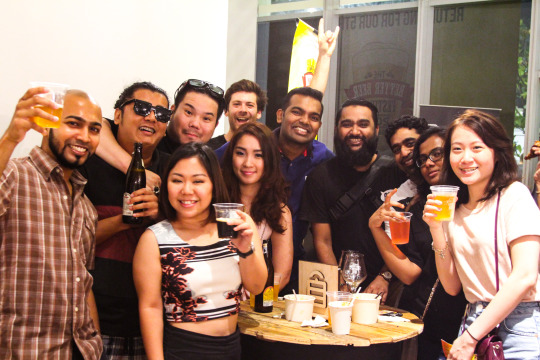
PART 4: THE IMPACT ON BEER DRINKERS IN MALAYSIA
The culture of the craft beer revolution marks a promising shift forward.
We are now on the cusp of an improvement from the days when ‘big beer’, in all practical senses, monopolised the Malaysian market, and could easily get away with serving bland-tasting, low cost beers which do not do justice to ‘Beer’ as a historically flavourful and exciting beverage.
Therefore, the end goal should be to create a level-playing field in the local beer industry. However, pragmatic barriers plague the local beer market and tilts the scales in favour of ‘big beer’.
Arguably, achieving a level playing field in Malaysia is parallel to the growth for the demand of craft beer. In turn, this will improve supply which translates to better accessibility and lower prices, ultimately benefitting beer drinkers in Malaysia.
The way forward to transcend these pragmatic barriers and to achieve the end goal begins with understanding the craft beer cause, because this creates transparency for us in Malaysia and, in turn, empowers us to make informed decisions when buying beer – understanding is power in decision-making.
